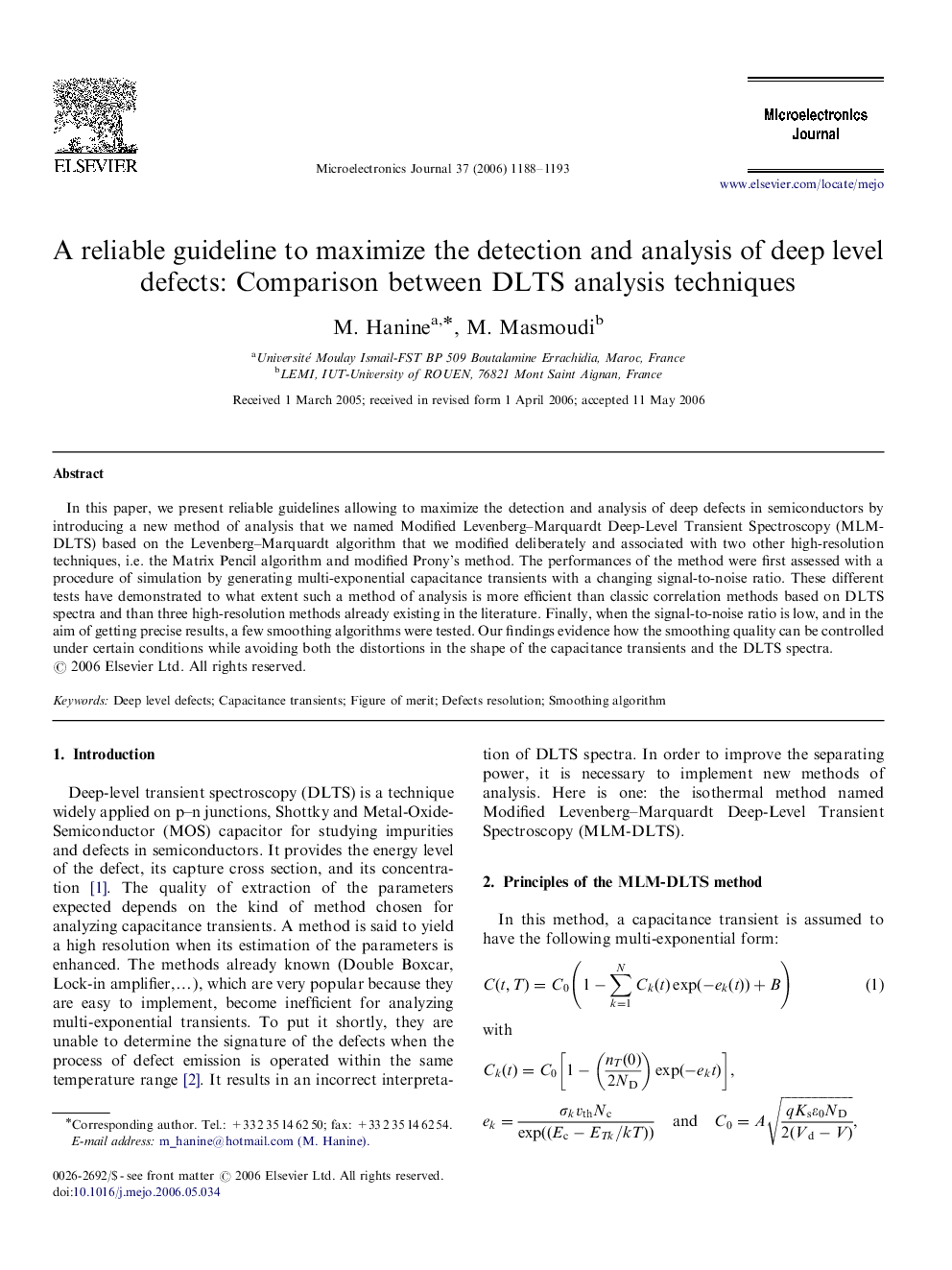| Article ID | Journal | Published Year | Pages | File Type |
|---|---|---|---|---|
| 542698 | Microelectronics Journal | 2006 | 6 Pages |
In this paper, we present reliable guidelines allowing to maximize the detection and analysis of deep defects in semiconductors by introducing a new method of analysis that we named Modified Levenberg–Marquardt Deep-Level Transient Spectroscopy (MLM-DLTS) based on the Levenberg–Marquardt algorithm that we modified deliberately and associated with two other high-resolution techniques, i.e. the Matrix Pencil algorithm and modified Prony's method. The performances of the method were first assessed with a procedure of simulation by generating multi-exponential capacitance transients with a changing signal-to-noise ratio. These different tests have demonstrated to what extent such a method of analysis is more efficient than classic correlation methods based on DLTS spectra and than three high-resolution methods already existing in the literature. Finally, when the signal-to-noise ratio is low, and in the aim of getting precise results, a few smoothing algorithms were tested. Our findings evidence how the smoothing quality can be controlled under certain conditions while avoiding both the distortions in the shape of the capacitance transients and the DLTS spectra.
